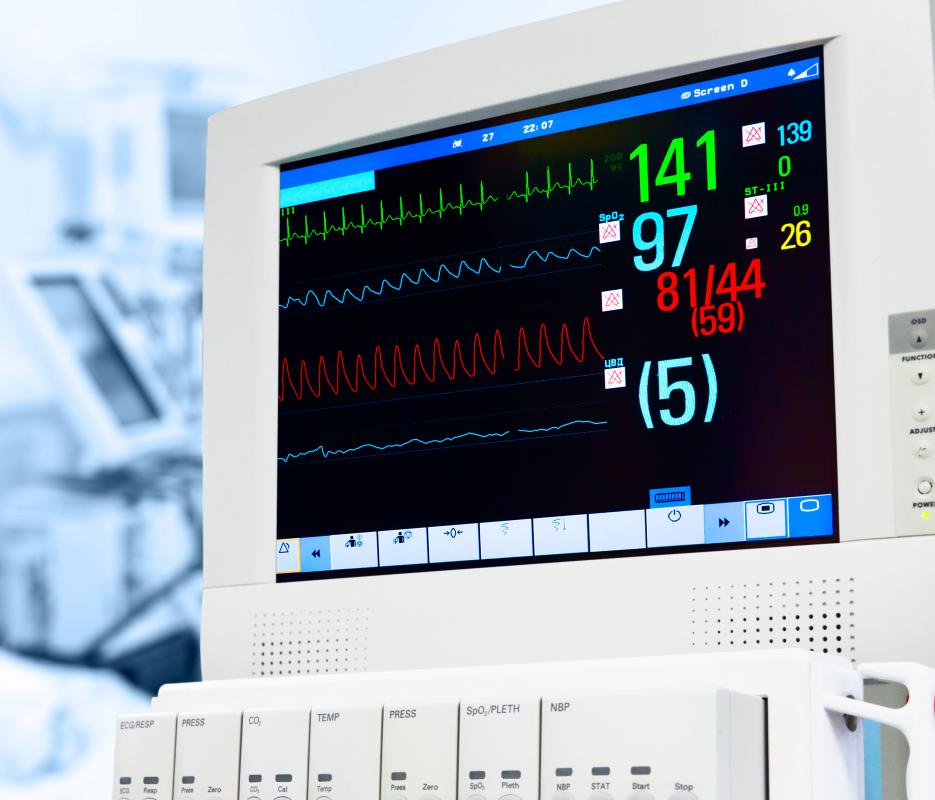At TheHealthBoard, we're committed to delivering accurate, trustworthy information. Our expert-authored content is rigorously fact-checked and sourced from credible authorities. Discover how we uphold the highest standards in providing you with reliable knowledge.
What is an External Pacemaker?
Developed in the 1950s, the external pacemaker is a device that uses electrical impulses to stimulate the heartbeat of patients with conditions such as an abnormally slow heart rhythm. It is a small device worn on the outside of the body that delivers electric current impulses via a lead taped to the chest. This type of pacemaker is used on a temporary basis until the heart rate returns to normal or a permanent device can be inserted. It can be a lifesaving measure, but it's typically too uncomfortable to be worn on a permanent basis.
The modern external pacemaker was developed in the 1950s by several researchers, and make the concept of using electrical stimulation to regulate heartbeat more practical. The devices were further refined in the 1980s in order to improve their reliability and reduce patient discomfort. The pacemaker consists of a small control unit that generates electrical impulses and leads or wires and pads taped to the patient's chest. The device operates on battery power and can be strapped to the body or carried.

The device operates by delivering an electrical impulse to the patient’s heart muscles. These impulses stimulate the muscles to contract, thereby normalizing the heartbeat. The most common use of external pacemakers is as an emergency measure to restore and regulate abnormal heart rhythms; they are can be used as long as the patient still has some sort of pulse. For example, when a patient has an abnormally slow heartbeat, or bradycardia, a pacemaker can restore the heart to a normal rhythm in a quick and effective manner. One can also be useful if a patient's heartbeat has an irregular rhythm or if it's too rapid.

During use, the external pacemaker takes over the job from the body's own natural pacemaker of telling the heart when to beat. For some patients, the device can be removed after a short time and the heartbeat returns to a normal, healthy rhythm. If the heartbeat reverts to an abnormal rhythm, the patient will need a pacemaker implanted into the body to control the heartbeat on a permanent basis. For patients with certain cardiovascular conditions, an internal pacemaker may be indicated to maintain health.

This type of pacemaker can be a lifesaving device, and it is quick and easy to apply in emergency situations when regulation of an abnormal heart rhythm is urgently needed. The primary disadvantage is discomfort to the patient. Most people are able to feel the electrical impulses the pacemaker delivers along with uncomfortable muscle twitches.
AS FEATURED ON:
AS FEATURED ON:















Discuss this Article
Post your comments